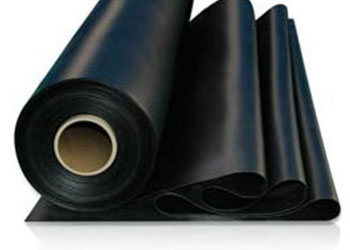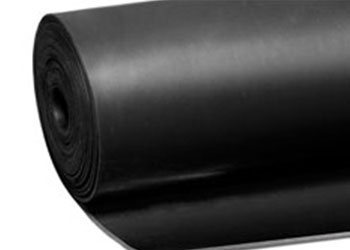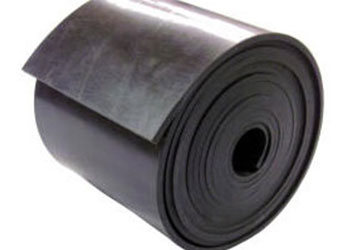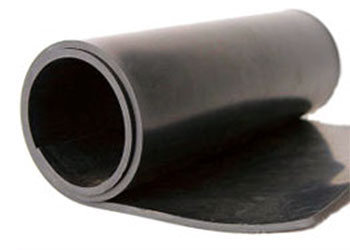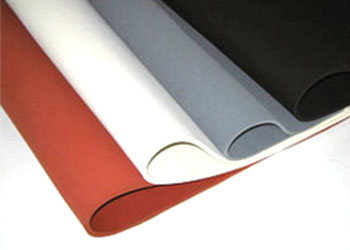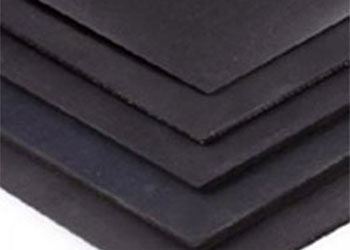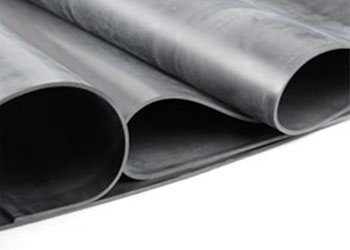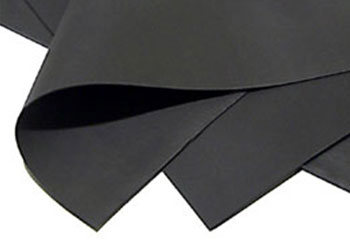
Rubber has found itself used in many industrial duties
because it provides and maintains elastic properties across
a wide range of process conditions and temperatures. As a
specialist supplier of seals and gaskets our development in
rubber technology has remained progressive, with rubber
lending itself so readily to so many sealing applications.
Whilst no single grade has all the desired properties,
indeed some properties may only exist in one type of
rubber, by understanding the service conditions a suitable
grade can generally be selected from stock or achieved
through careful compounding to a new specification.
Most natural and synthetic
grades of rubber are also available in sponge form
(cellular rubber) in both open and closed cell grades. Open
cell will absorb fluid, such as a car washing sponge;
varying densities and materials of open cell can be used
for packaging, acoustic and sound insulation, filters and
low pressure duty dust tight seals. Closed cell sponges do
not readily absorb fluid and make excellent gaskets in cut
or strip form where lighter compressive loads and/or uneven
flange faces exist, to make effective low cost dust and low
pressure fluid seals.
SEP can supply all
rubber and sponge materials in:
Sheet Roll - commercial, specification
& diaphragm grades;
Gasket, Diaphragm, Strip or Die/Cad-Cam cut shape
up to 100mm thick
Tape – to specified width & thickness
with or without pressure sensitive adhesive backing;
Fabricated forms – segmented, dovetailed,
vulcanised joints;
Extrusion and Moulded Shapes – see SEP
brochure‘Manufacturing in
Rubber'
 A selection of sponge
A selection of sponge
 Cream DTD 5531 grade Silicone 0.5mm thick, cut
from moulded discs. Ultrasonically cleaned for
oxygen service within the Aerospace
industry.
Cream DTD 5531 grade Silicone 0.5mm thick, cut
from moulded discs. Ultrasonically cleaned for
oxygen service within the Aerospace
industry.
Special application
requests show our ultimate flexibility. Where a
requirement exists for a commercial or
specification grade of rubber, thickness, hardness
and colour that is not readily available or
economical; we have the ability to mould the
material in economic sheet, disc or ring sizes and
then cut the gasket within the same factory – and
if required on the same day
Electrically Conductive
Silicone
Electrically conductive
grade silicone is designed to be used in many different
applications. It is a carbon filled silicone material
that will act as a low amperage conductor and also
provides protection against electrostatic discharge. We
are able to cut gaskets in 0.2mm, 0.5mm, 0.8mm, 1.0mm,
1.5mm, 2mm & 2.5mm.
| Physical Properties |
Units |
Values |
| Tear Strength |
KN/m |
12 |
| Compression set (24hrs @
100°C) |
% |
8 |
| Hardness |
Shore A |
75° |
| Density |
g/cm3 |
1.22 |
| Tensile Strength |
MPa |
6 |
| Volume Resistivity |
Ω•cm |
4.3 |
| Elongation |
% |
150 |
| Temperature |
°C |
-50 to +240 |
| Appearance |
Black colour, smooth
surface on both sides |
The above values are
typical properties and are provided for information
only. They should not be used to set specification
requirements. It is up to the end user to determine
whether the material is suitable for the intended
application.
For more information on a selection of the different grades available, please select a material from the options below.
(All information displayed below was correct to the best of our knowledge at the time of entry.)
For more information on a selection of the different grades available, please select a material from the options below.
(All information displayed below was correct to the best of our knowledge at the time of entry.)
